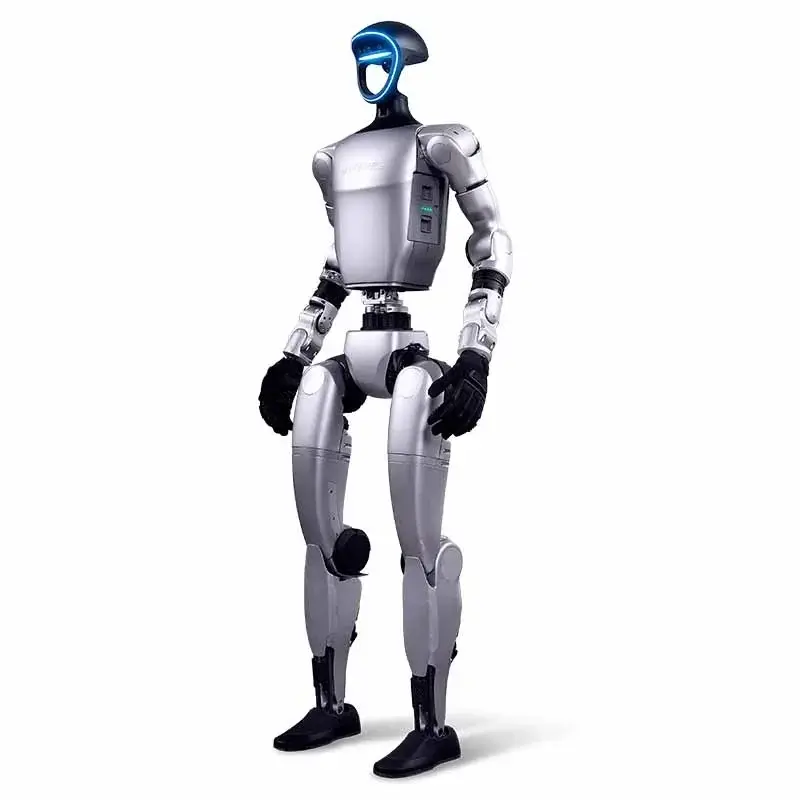Revealing the Power of Precision: Your Essential Guide to CNC Machining (Includes Free Tutorial PDF!)
The world of modern manufacturing is filled with precision, often powered by superior technology: Computer Numerical Control (CNC) machining. From the smartphone in your pocket to the engine under the hood of your car, CNC plays a pivotal role. Whether you’re an engineer conceiving a prototype, a designer turning a vision into reality, or a business that needs to reliably produce parts, understanding the basics of CNC is invaluable. This guide demystifies the process and explains why huge lightwith its expertise Five-axis CNC machiningready to turn your designs into reality with unparalleled precision and efficiency.
What exactly is CNC machining?
At its core, CNC machining is a subtractive manufacturing process. Imagine a sculptor carefully carving material from a solid block to reveal a shape. CNCs do this autonomously using computer-controlled machine tools. Details are as follows:
- Digital Blueprint (CAD): It all starts with a computer-aided design (CAD) model. This 3D digital file defines every dimension, curve, and feature of the final part.
- Convert design into machine language (CAM): Specialized computer-aided manufacturing (CAM) software takes a CAD model and generates a precise set of geometric instructions – called G-code. The code regulates each movement of the cutting tool, spindle speed, feed rate, coolant application and tool changes.
- Machine control: The G code is loaded into the CNC machine’s controller. Equipped with cutting tools (e.g. drills, end mills, lathes), the machine can interpret the code and perform machining operations on the raw material (blank) with incredible precision and repeatability.
- Subtractive transformation: Material is precisely removed from the blank, layer by layer or contour by contour, until the final part emerges that matches the CAD model.
Why CNC Dominates: Key Advantages
- Exceptional precision and accuracy: CNC machine tools achieve micron-level tolerances (±0.001" or less), manual processing is impossible. The parts are the same every time.
- Complex geometric shapes: CNC can create complex shapes, internal features, tight curves and sharp details that are impossible with traditional methods.
- Repeatability and scalability: Once programmed, hundreds or thousands of identical parts can be produced quickly, consistently and efficiently.
- Material Versatility: Capable of processing a variety of materials, from metals (aluminium, steel, titanium, stainless steel, brass, copper) to plastics, composites and even wood.
- Reduce human error and improve safety: Automation minimizes reliance on operator skill accuracy, improves consistency, and reduces risks associated with manual tool operation.
Inside a CNC Machine Shop: Exploring Common Types
While basic CNC mills and lathes are common, machine choice can significantly affect functionality:
- 3-axis CNC: Main force. Linearly moves the cutting tool along X (left and right), Y (front and back), and Z (up and down). Great for simpler prismatic parts, but requires repositioning the workpiece for multi-sided machining, increasing setup time and potential for errors.
- 5-axis CNC (Fuelite’s specialty): Adds two rotational axes to linear X, Y, Z motion. This enables the cutting tool to approach the workpiece from a virtual position any angle. Main advantages:
- Single setup processing: Complex geometries can be completed in one fixture, significantly reducing time and eliminating repositioning inaccuracies.
- Superior surface finish and precision: Continuous optimal tool positioning results in smoother surface finishes and more precisely contoured surface features.
- Machining complex organic shapes: Critical for molds, impellers, turbine blades, aerospace components and complex medical implants.
- Shorter cutting tools: The rotation feature often allows the use of shorter, sturdier tools with less vibration for better finishes and tolerances.
- Faster production: Complex parts can be machined much faster than multiple setups on a 3-axis machine.
Mastering the Material: What Can CNC Machines Process?
CNC machining, especially advanced five-axis machining, excels at processing a wide range of engineering-grade materials:
- Metal: Aluminum (various alloys), stainless steel (303, 304, 316), steel (carbon steel, alloy steel), titanium (CP, 6AL-4V), brass, copper, Inconel.
- plastic: Delrin (POM), Nylon (PA), PEEK, ABS, Polycarbonate (PC), PTFE (Teflon), Acrylic (PMMA).
- Others: Composites, processed waxes, wood.
Honglaite five-axis CNC machining releases peak potential
Choosing the right manufacturing partner is critical. As a leader in precision five-axis CNC machining services, Honglaite:
- State-of-the-art five-axis capabilities: Our investment in cutting-edge five-axis CNC machining centers allows us to tackle your most demanding geometric challenges with unparalleled skill.
- Advanced production technology: In addition to machine tools, our expertise in complex programming (CAM optimization), multi-axis toolpath strategies, high-speed machining and optimal fixturing ensure optimal performance and part quality.
- Metal parts specialization: While we are proficient in a variety of materials, we have deep expertise in precision machining of hard and exotic complex geometries. Metalconsistently achieving tight tolerances.
- One-stop solution: Eliminate supply chain hassles. Gretel offers a comprehensive Post-processing and finishing services – From deburring and polishing to anodizing, electroplating, heat treatment and powder coating – all from a single source.
- Material flexibility and expertise: Please ask us about your project requirements. We guide material selection and have the ability to handle most materials Effectively.
- Speed and reliability: We understand the rhythm of the market. Our optimized processes and expertise enable Quick turnaround time For custom parts without sacrificing quality.
- Focus on your values: Superior precision, sophisticated functionality and a full-service approach translate into the best value for money proposition. Get high-quality parts faster and more reliably.
Expand your CNC knowledge: download our free tutorial PDF guide!
Ready to dive deeper? Understanding CNC fundamentals can help you perform better design for manufacturability (DFM) and collaborate more effectively with your machining partners. We have put together a comprehensive CNC Basics Tutorial PDF Guide It extends the concepts discussed here to cover:
- Detailed workflow walkthrough (CAD to finished product)
- An in-depth explanation of CNC machine tool types and their movements
- Overview of Commonly Used Cutting Tools and Operations
- Key CNC Programming (G-Code) Concepts
- Material considerations and selection recommendations
- Tips for optimizing part design for CNC machining
[Call to Action Button/Link: Download Your Free CNC Basics Guide PDF Here] Replace with actual download link or contact mechanism
Conclusion: Precision engineering solutions are within reach
CNC machining is the backbone of modern precision manufacturing, enabling the creation of complex, high-tolerance parts essential to countless industries. While 3-axis machines can meet many needs, Five-axis CNC represents a major leap forward Capacity, efficiency and quality of complex components.
GreatLight leverages this advanced technology, coupled with deep process expertise and a commitment to comprehensive service, to provide unparalleled Customized precision machining solutions. We help innovators and businesses bring challenging designs to reality efficiently and cost-effectively. From rapid prototyping to full production run metal parts Requires extreme precision, Huilite Five-Axis CNC Machining is your strategic manufacturing partner.
Don’t settle for limitations. Embrace the freedom of complex designs and the guarantee of the highest precision. Customize your precision parts today and experience the GreatLight difference! [Link to Contact/Quote Page]
Frequently Asked Questions (FAQ) About CNC Machining
-
Q: How much does CNC machining cost?
- one: Cost depends on several factors: part complexity, material selection, quantity, required tolerances, setup time, machine time and finishing requirements. Five-axis machining, although usually more expensive per machine hour Compared with 3-axis, it can be significantly reduced total cost Tackle complex parts by enabling a single setup and faster completion. Gretel focuses on providing Best value for money Through process optimization.
-
Q: What are the tightest tolerances achievable with CNC (especially five-axis)?
- one: Tolerances are highly dependent on the specific machine, material and part geometry. Although standard machining may maintain ±0.005" (0.127mm), Honglaite five-axis precision machining can be continuously achieved ±0.001" (0.025mm) or tighter Key features of using appropriate workmanship and materials.
-
Q: What materials are most suitable for CNC machining?
- one: CNC can process a wide range of types. Common choices include:
- Metal: Aluminum alloy (easy to machine, strong, lightweight), stainless steel (corrosion resistant, strong), steel (versatile, cost-effective), brass/copper (electrical/thermal properties), titanium (high strength, lightweight, biocompatible – requires advanced machining like our 5-axis).
- plastic: Delrin, Nylon, ABS, Polycarbonate, PEEK (High Performance).
- We recommend the best materials based on your part’s functionality, strength requirements, environment and budget.
- one: CNC can process a wide range of types. Common choices include:
-
Q: What are the main differences between 3-axis and 5-axis CNC?
- one: 3 axis: The tool moves linearly (X, Y, Z). Great for prismatic parts, but requires multiple setups for complex shapes, resulting in longer time and potential alignment errors. 5 axis: Tool moves linearly and Rotating on two additional axes allows access to the workpiece from almost any angle. Allows machining of complex contours and deep pockets a settingimproving the accuracy, surface finish and efficiency of complex designs.
-
Q: How long does a typical CNC machining project take?
- one: Delivery times vary greatly. Simple prototypes can take days, while complex production runs can take weeks. Key factors: complexity, required tolerances, material availability, quantity and current shop workload. Ferrite prioritizes efficiency; Our expertise and advanced 5-axis technology often enable Quick quote and Quick turnaround time Does not affect quality.
- Q: Why choose GreatLight specifically for my CNC machining needs?
- one: Giant Light United Advanced five-axis CNC technology and Deep process expertise and a One-stop service method. we are good at Complex metal partsproviding comprehensive Post-processingprovide experts DFM guidanceand provide excellent High precision and competitive price focus on Speed and reliability. We solve complex manufacturing challenges efficiently.









































